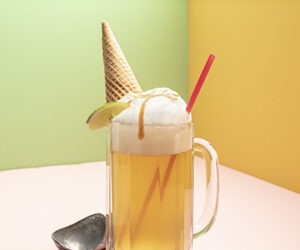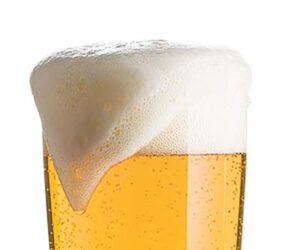Making Vienna Lager: Tips from the Pros
Vienna lager originated in Austria in the 1830s but has since gone just about extinct in Europe, with breweries replacing the style with Pilsners and Oktoberfests. Austrian immigrants made Vienna lagers popular in Mexico later in the 19th century and today there are a handful of American craft breweries producing Vienna lagers as well.
Brewer: Jason Oliver, Devils Backbone Brewing Company in Roseland, VA
For about half my career I exclusively brewed Germanic-style beer and in two of the breweries I worked, Marzen was one of the flagship beers and the best seller. When I left my last job to start Devils Backbone, I didn’t want to brew another Marzen because I was never a huge fan of the style. I decided to have a Vienna-style lager be one of DB’s flagships because they are slightly lower in gravity than Marzen, a little more refined, a little more rare, more delicate, and more to my taste. It has color, its smooth, approachable, nice malty flavor, goes great with food, and is rewarding. I like to say it gives you a lot but doesn’t take anything from you because it isn’t too heavy, bitter, sweet, or overly alcoholic. It has something for just about everyone. It’s just a great drinking beer. And it’s an attractive looking beer — our Vienna has a sparkling chestnut amber hue.
So Vienna Lager was one of our original beers at our brewpub and is one of the two year-round beers we decided to lead with in package when we built our production brewery. In-house, Vienna used to sell on par with our IPA, in package Vienna is killing it. It’s around 65% of our production, with the rest being IPA, Schwarzbier, and our specialty/seasonal brews. I think we hit the pulse of the Virginia beer drinker with the Vienna Lager.
The secret to a great Vienna lager, first, is it has to have a clean lager fermentation or else all bets are off. It should have that lager drinkability with an apparent malt character that is a balance of toasted and caramel malt flavors. Hops are a supporting role that should not overwhelm and essentially just hold the malt in check.
Our Vienna Lager is brewed from a base of roughly equal parts Pilsner and Vienna malt with dark Munich and caramel malt adding character in roughly equal percentages to each other as well. Our Pilsner malt is Canadian Malting Superior Pils, which I like because of its low DMS potential and its delicate flavor. It’s a great base to build upon. The Vienna, Munich, and caramel malts are all of European origin.
For bittering we use German Northern Brewer. It’s kind of an old fashion hop now, but I love it. It tastes and smells like a hop should. It has classic hop character, not just bittering potential. For flavor and aroma we use Czech Saaz. Hops play a supporting role in our Vienna Lager but they are important. If you asked me five years ago if the type of bittering hop mattered much I would have said “not really,” but now I really think they do. I think all hops matter, and while you may not be able to put a finger on it all the time, bittering hops add more than just IBU’s.
We cool the wort to about 52 °F (11 °C) and let the temperature rise into a fermentation range of 53-54 °F (12 °C). Our yeast likes it warm. Total production time for Devils Backbone Vienna Lager is about 5 weeks.
My advice for homebrewers would be to pick a gravity between 12 and 12.5 Plato, make it no more than 25 IBUs, do not add a lot of flavor or aroma hops (keep minimal), do not overdo the caramel malts, and have a clean, healthy lager fermentation. Also, use quality ingredients and intend for your beer to be excellent, that’s probably the most important.
Brewer: Chris Priebe, Millstream Brewing Co. in Amana, IA
Vienna-style lagers were the first beers I fell in love with during a high school trip to Germany at the enthusiastic age of 16. Later, while working at the Dubuque Star Brewery, I had the privilege of brewing this style as one of their main beers back in the 90s. Good Vienna-style lagers are smooth, malty, and slightly sweet. You want a good balance between the base malt and Munich malts. This appeals to a wide audience even in today’s market. Schildbrau is still one of our flagship brews.
Darker crystal malts tend to be a little harsh or “roasty” for the style. I prefer medium-colored Munich malts — 20 °L is my favorite. Don’t overuse the crystal malts, keep them under 30% or they become overpowering. We use 11.8% light Munich, 7.8% each of crystal 60 °L and Munich 20 °L. Then just two-row base malt.
The biggest key for me is aging — four weeks from the day it’s brewed is a minimum, but 5 to 6 weeks is better. This really helps temper the hops and sulfury lager flavors.
We use Millennium as our bittering hop for Schildbrau. In today’s hop market, Millennium has been consistently available to me and I am primarily concerned with the alpha acids on the first hop addition anyway. We used to use German noble varieties for the finishing hops, but their availability is somewhat intermittent. Mt. Hood is a good substitute and remains readily available. Schildbrau varies from 16-18 IBU because I adjust things from year to year as the malt flavors change. Yeast performance can also vary, which affects the final sugar profile. The IBUs are a little low for the style guidelines, but I do prefer a sweeter beer for this style, thus accentuating the malt character.
We ferment our lagers a little warmer than you will see recommended by most. For whatever reason, our lager yeast prefers to ferment at 60 °F (15.5 °C). That’s a little warm, but we use a refrigerated cellar so I suppose it needs to compensate for the ambient cellar temperature. It takes 5-10 days for the primary fermentation, then I transfer it off the yeast and we age it for another 2-3 weeks.
Some advice for a homebrewer trying a Vienna-style lager for the first time is, as I mentioned earlier, don’t go too dark on the crystal malts, keep the hops in check, age it cold, and promote the wonderful characters of the Munich malts. Also, water is very important for this style. If your water is hard, keep the O.G. higher (over 1.048) by using more base malt or blend in some distilled water when mashing.
Brewer: JP Williams, Von Trapp Brewery in Stowe, VT
Vienna lager is a style that is hard to brew. It puts your methods right out there in the open because is nothing to hide off-flavors. It is a style that can make a good brewer bad. A great Vienna lager is crisp with subtle hops and a residual sweetness. The aroma should be that of caramel notes. It should have a dry finish with the presence of malt and hop bitterness.
Most American breweries create bitter, drier versions of Vienna lagers, but we steer towards the more traditional European version of the sweeter-style lager. The decoction boiling process adds to the complexity of this recipe and creates the crisp lager we are looking for.
We make 15 bbl batches. The grain bill for our recipe is two-thirds Vienna malt and then about 17 percent light Munich malt, 8 percent dark Munich, 8 percent Pilsner and less than 1 percent Acidulated malt.
Our first hop addition uses Pearle and Hallertau, and for the second addition I use Tettnang and Saaz. The hops are subtle with a low noble hop aroma. Hallertau and Perle complement each other well with their earthy/spicy qualities. The Tettnang are peppery and act well with the delicate flowery aroma of the Saaz.
We ferment at 50 °F (10 °C) for four days, then give it four days at 54 °F (12 °C) for a diacetyl rest and crash at 33 °F (1 °C) for three days. Then we give it 30 days to lager at 36 °F (2 °C).
My best advice for homebrewers who want to try the style is to adhere to your fermentation and lagering temperatures. Your diacetyl rest is critical and can define your brew, not in a good way. The style should not have fruity esters or diacetyl in it whatsoever. If you are diligent in your techniques, you will be rewarded with a clean Vienna-style lager.


